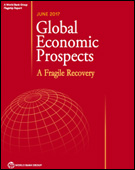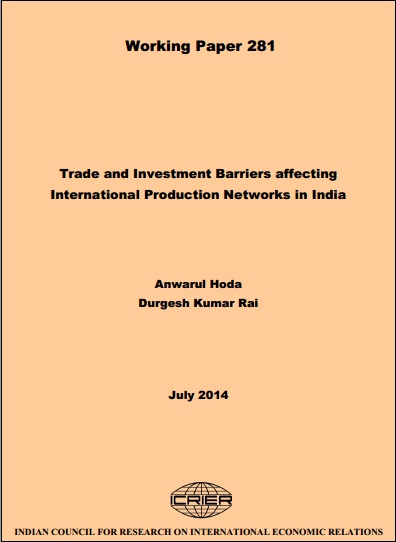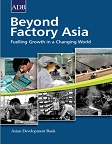East Asia Pacific Economic Update, April 2018: Enhancing PotentialEast Asia and Pacific (EAP) grew slightly faster than anticipated in 2017, with growth in Myanmar rebounding slightly at 6.4% due to strong exports. Amid risks to macroeconomic stability, EAP countries must enhance trade facilitation and integration, improve education systems, and upgrade capabilities of workers and managers. Author: World Bank Year: 2018 Download Tags: Exports, GDP, India, Manufacturing, Myanmar, Poverty Reduction, Trade Facilitation, WB Asian Development Outlook (ADO) Supplement: A Firmer Growth Outlook for AsiaGrowth forecast for developing Asia for 2018 is downgraded to 5.8%, from projections in the Asian Development Outlook 2017 Update in September 2017. Forecasts for the region’s inflation rates have been retained at 2.9% for 2018. For South Asia, growth outlook for 2018 is retained at 7.0%. India’s gross domestic product (GDP) growth rebounded to 6.3% in FY2017 (ending 31 March 2018), led by manufacturing. Bangladesh showed higher GDP growth for FY2017 (ended 30 June 2017) than was previously estimated. Bhutan showed stronger growth than forecast, supported by transport and communication services and construction. Growth projections for Maldives, Nepal, and Sri Lanka are in line with those in the Update. Author: Asian Development Bank Year: 2017 Download Tags: ADB, India, Bangladesh, Bhutan, Maldives, Nepal, Sri Lanka, Manufacturing  June 2017 Global Economic Prospects: A Fragile RecoveryThe World Bank forecasts that global growth will strengthen to 2.7% in 2017 amid a pickup in manufacturing and trade, rising confidence, favorable global financing conditions, and stabilizing commodity prices. In South Asia, growth is projected to remain strong at 6.8% in 2017. India is recovering from the temporary adverse effects of the end-2016 withdrawal of large-denomination currency notes. Activity in Bangladesh is moderating, reflecting a pullback in domestic demand and industrial production. Regional growth is expected to steady in 2018-2019, reaching an average of 7.2%, supported by strong domestic demand, a small rise in exports, and strong foreign direct investment. The regional outlook has been slightly revised down from January, reflecting a more protracted recovery in private investment in India than previously expected. Author: World Bank Group Year: 2017 Download Tags: WB, Bangladesh, FDI, India, Manufacturing, South Asia, Trade Growth Slowdowns, Middle-Income Trap, and Demographic Profile in South AsiaThis paper examines how investment in human capital is critical for innovation. Analyzing the different growth-promoting factors in South Asian economies, with a focus on demographics, and factors that can help shift middle-income countries to high-income countries, it concludes that economic transition is affected by firms’ productive advantages—ability to compete with high-skilled producers, low-wage exporters—and education-based growth, which can help advance the country's technological capacity. Author: S. P. Jayasooriya Year: 2017 Download Tags: Economics, Employment, Manufacturing, Economic Corridor, South Asia ASEAN-India Air Connectivity ReportAir connectivity plays an important component in India’s connectivity agenda with the Association of Southeast Asian Nations (ASEAN). This ASEAN-India Air Connectivity Report addresses issues and challenges concerning air connectivity between India and ASEAN, including constraints and bottlenecks hindering growth of air cargo that would help unlock trade potential. With India embarking on “Make in India” and “Skill India” policies, stronger air connectivity has become all the more important in the context of India’s drive for economic integration with its neighbors in the east. Author: ASEAN-India Centre and Research and Information Centre for Developing Countries Year: 2016 Download Tags: Transport, ASEAN, India, Manufacturing Outward FDI by Indian Manufacturing MNEs: Impacts and Implications This Asia-Pacific Research and Training Network on Trade Working Paper investigates the home country effects of outward foreign direct investment (OFDI) on domestic activity of Indian multinational enterprises (MNEs). The empirical evidence suggests that OFDI by Indian MNEs has a positive impact on export intensity and research and development. In order to derive desired complementary benefits of OFDI by manufacturing firms, policies may be directed to enhance the country’s international supply chain connectivity for greater participation in global value chain and production network. Author: Khanindra Ch. Das Year: 2015 Download Tags: India, FDI, Global Value Chains, Trade, Export, Development, Manufacturing, UNESCAP Future of Factory AsiaThis volume, co-published by the Asian Development Bank and the Korea Economic Research Institute, reflects one of the broad thematic sessions of the Seoul conference, Beyond Factory Asia. It assesses the challenges and sustainability of the Factory Asia model – supplying from the East and consuming in the West – and provides suggestions and strategies on effective management of these concerns. The volume further analyzes obstacles in the success of Factory Asia, its speed in expanding its own domestic and regional markets, and its progress in upgrading competitiveness in the manufacturing sector. The new Factory Asia must nurture new sources of growth in the region and focus on regional economic integration. Author: Choi Byung-il and Changyong Rhee (eds.) Year: 2014 Download Tags: Economic Integration, Asia-Pacific, Trade Policy, ADB, Asia, Manufacturing, Regional Integration, Bangladesh, Energy, Sri Lanka, Transport  Trade and Investment Barriers Affecting International Production Networks in IndiaRecognizing India as an outlier in development of international production networks with the lowest participation among Asian countries, this study investigates the reason for India’s lackluster participation in production-sharing networks. Using desk work, field surveys, and interviews, an analysis is adopted with three comparator countries in the region that have been successful in production-sharing arrangements as well as industrial growth – China, Malaysia, and Thailand. It further describes foreign direct investment inflows into India, analyzes behind-the-border investment environment, and provides recommendations to improve investment climate and hasten the pace of manufacturing development in India. Author: Anwarul Hoda and Durgesh Kumar Rai Year: 2014 Download Tags: India, Trade, Production Networks, Investment, Thailand, Manufacturing, Customs, Economic Corridor, Energy, Trade Facilitation, Transport  Beyond Factory Asia: Fuelling Growth in a Changing WorldThis paper assesses the challenges of Factory Asia – a model of regional networks connecting production centers in different Asian economies. It forms part of regional and global value chains and constitutes an important source of growth in the region. Regional cooperation is vital to the success of Factory Asia, which calls for greater South-South cooperation to leverage knowledge in domestic manufacturing, allowing countries such as India to leapfrog to higher value chains. For Bangladesh and Sri Lanka with small domestic markets, strategic options include carving out a niche in lower-value manufacturing. The paper further argues that policymakers should be wary of expanding or increasing the number of free trade agreements for the growth or spread of production networks. Author: Asian Development Bank Year: 2013 Download Tags: South Asia, Regional Cooperation, Trade Policy, Manufacturing, Exports, Small and medium enterprises, India, Agriculture, Bangladesh |



